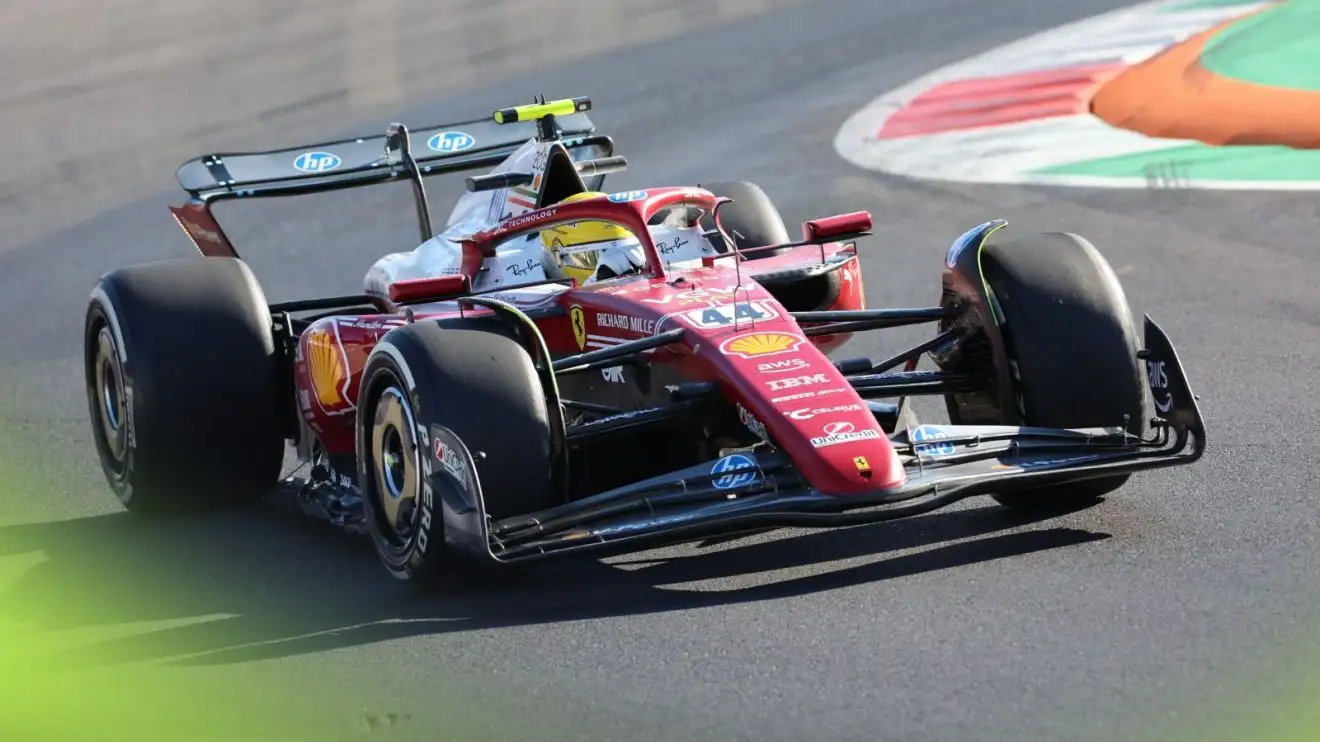The impending arrival of the 2026 Formula 1 season marks one of the biggest regulatory shake-ups in the sport’s modern history, fundamentally altering the car design, power unit specifications, and aerodynamic philosophy. This profound technical shift is precisely what led seven-time World Champion Lewis Hamilton to make his seismic move to Scuderia Ferrari.
Now, early reports from Maranello suggest that Hamilton and his teammate Charles Leclerc have already begun testing the radical new machinery in the simulator, delivering an initial verdict that offers a critical glimmer of hope for the tifosi.
The 2026 regulations mandate a near 50% shift to electric power and a transition to fully sustainable fuels. Furthermore, the introduction of active aerodynamics will force teams to completely rethink their car concepts.
These sweeping changes present both a massive challenge and a golden opportunity—one that Hamilton hopes will reset the competitive balance and allow him to pursue an unprecedented eighth World Championship title.
Hamilton and Leclerc Sample the Future

Both Hamilton and Leclerc have reportedly spent crucial time in Ferrari’s simulator driving the virtual model of their 2026 contender. While the physical car is not expected to hit the track until a private test in Barcelona in January, the virtual feedback is an essential early indicator of the car’s characteristics and potential performance.
According to a report from F1Actu, despite the media hype surrounding their disappointing 2025 season, Ferrari is committed to a ‘silent winter’ of intense development at Maranello. Having been prematurely hailed as championship favorites in previous years, the team is adopting a cautious approach, preferring to let their performance on the track speak for itself.

However, the internal feedback has been encouraging. The report states that both drivers have given ‘positive’ reviews of the early virtual version of the 2026 car. Charles Leclerc, in particular, has allegedly found the new car ‘more comfortable’ to drive compared to its ground-effect predecessors, which have defined the F1 era since 2022.
This comfort level is a significant boost for Lewis Hamilton. The consensus in the paddock is that the 2026 cars will feel dramatically different from the current generation. For Hamilton, whose recent decline in performance may have been linked to the challenging and often unstable characteristics of the post-2022 machinery, a clean slate represents a vital psychological and technical fresh start. A car that aligns better with his driving style—one focused on precision and stability—could instantly revive his title hopes.
High Stakes and Contractual Pressure

Hamilton’s move to Ferrari is secured by a three-year contract, theoretically keeping him in the red overalls until the end of 2027. However, the move is predicated on success. Given his competitive nature, whispers have already begun that the seven-time champion could retire or seek an exit if both he and Ferrari continue to struggle deep into the new regulatory cycle.
Conversely, the pressure on Ferrari is equally immense. Reports even suggest the team could consider a payout to terminate the contract if the partnership becomes “untenable”—a drastic scenario that underscores the monumental expectations tied to this union. Both driver and team are gambling on the 2026 regulations to deliver the success that has eluded them individually in recent years.
Ferrari is banking on challenging Mercedes’ long-standing engine dominance with their new power unit, but the pecking order for 2026 is harder than ever to predict. The power unit landscape is being radically reshaped, not only by the new hybrid rules but by the arrival of new players like Audi and Red Bull’s own Powertrains division, alongside Honda’s budding partnership with Aston Martin. The early positive feedback from Hamilton, therefore, provides a crucial psychological edge as they head into the highly secretive winter development phase.
The Audacious Strategy of Audi
Adding further complexity to the 2026 competitive picture is the surprising strategy adopted by one of the newcomers: Audi. The German giant, which officially launched its F1 project at a high-profile event in Munich, has taken what is described as the ‘most surprising’ approach among all engine manufacturers.
The report suggests that Audi has already “finalized” their 2026 power unit and has strategically shifted their “focus” to the development of the 2027 and 2028 models. This exceptionally early pivot could indicate that the team, reportedly led by former Ferrari Team Principal Mattia Binotto, has realistically ‘accepted’ that 2026 will be a year of teething issues and potentially limited performance.
Audi’s publicly stated goal is ambitious: they aim to win the F1 title by 2030, a faster ascent to championship glory than the 2005 entrants Red Bull managed when they achieved their first title in 2010. By prioritizing the stability and optimization of their power unit for the seasons following the initial regulation change, Audi is playing the long game, demonstrating confidence that their early, foundational work will eventually pay dividends.
For Ferrari and Hamilton, however, the expectation is immediate success. The positive simulator feedback is a necessary, though preliminary, boost, confirming that the new car does not possess the inherent handling flaws that plagued their recent challengers. The “silent winter” in Maranello may be their attempt to avoid public overhype, but the early signs suggest that their foundation for the new F1 era is solid, and Lewis Hamilton is ready to exploit the opportunity.
